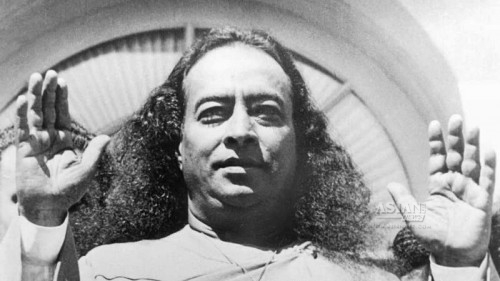
By M.R. Narayan Swamy
If India’s idea of an International Yoga Day has found easy acceptance in the UN, much of the credit must go to Paramhansa Yogananda, India’s first yoga guru in the US whose 62nd death anniversary.
Unlike Swami Vivekananda, Yogananda is not that widely appreciated although he played a huge role in laying the foundation for yoga in the United States a century ago.
Yogananda, born Mukunda Lal Ghosh in Gorakhpur, India, sailed to the US in 1920 and remained there until his death in 1952. In that sense, he was also one of India’s earliest longest serving NRIs.
Yogananda toured the US extensively, teaching meditation and Kriya Yoga to tens of thousands of American men and women in packed halls.
Unlike now, that was no easy task. Yoga was unknown in the West, and many Americans looked down upon Hindu holy men, yogis included.
The Kriya Yoga is a lesser-known yoga science based on special breathing techniques to help in self-realisation.
Yogananda left the US to visit India only once, during which period he taught Kriya Yoga to Mahatma Gandhi at the latter’s ashram in Wardha.
What really made Yogananda an iconic figure globally was his “Autobiography of a Yogi”, declared one of the 10 greatest spiritual classics of the last century.
Since it was first published in the US in 1946, the book became an instant hit, got translated into over 20 languages worldwide and has sold millions of copies. It remains a bestseller.
After his autobiography was published, Yogananda spent the last years of his life devoting himself to literary work. He withdrew more and more from public life.
During this period, he edited and revised his earlier books. Shortly before he died, Yogananda told a disciple: “My life work is done.”
On March 7, 1952, Yogananda was a speaker at a banquet hosted by the Indian Association of America in honour of India’s ambassador to the US, Binay Ranjan Sen, at the Baltimore Hotel in Los Angeles.
Those at the venue noticed that Yogananda did not have his usual heart warming smile. He didn’t laugh too at the amusing anecdotes in the various speeches. An aura of strangeness appeared to surround him.
In a short and memorable speech, Yogananda said: “Somewhere between the two great civilizations of efficient America and spiritual India lies the answer for a model world civilization.”
As he came towards the end of his speech, Yogananda became surprisingly emotional. His close followers would later recall that he knew he was about to pass away.
“I am proud that I was born in India,” he said, and recited a poem that read in part:
“Mortal fires may raze all her homes and golden paddy fields;
Yet to sleep on her ashes and dream in mortality,
O India, I will be there!”
As he finished the poem, Yogananda slid to the floor and died, a beatific smile on his face. The yoga master had often said: “I do not wish to die in bed, but with my boots on, speaking of God and India.”
A devastated Indian ambassador paid his tributes: “He (Yogananda) was born in India, he lived for India, and he died with the name of India on his lips.”